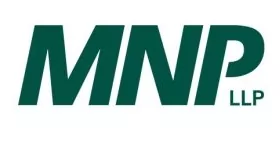What is AODA, and why does it matter for your
website?
The Accessibility for Ontarians with Disabilities Act (AODA) was
passed in 2005 and requires all public and private organizations in
Ontario to comply with regulations that have been phased in over a
number of years.
AODA regulations that came into force in 2011 specify an
Information and Communication (IC) Standard. The IC Standard
mandates that “new Internet websites and content on those
websites” must conform to the Web Content
Accessibility Guidelines (WCAG) 2.0 Level A by January 2014.
These guidelines are the global standard for web accessibility and
cover areas like writing clear web content, providing text for
images and ensuring your website can be navigated using only a
keyboard. The regulations define “new” as “either
a website with a new domain name or a website with an existing
domain name undergoing a significant refresh.” In this
context, “significant refresh” should be taken to
mean:
• A new look and feel to the website
• A change in navigation
• Any significant change or addition to the content, where
content is defined as any information that may be found on a web
page or web application, including text, images, forms and
sounds
In practice, this means that if your website is accessible to the
public and you have made any changes to it since January 1, 2012,
you are legally required to ensure that your website complies with
WCAG 2.0 Level A now.
Despite the legal mandate, it is clear that the vast majority of
Ontario businesses and many public sector organizations have yet to
comply with AODA requirements related to websites.
For many organizations, compliance is a daunting challenge. For
example, some organizations have many web properties that need to
be in compliance. In many cases, staff members responsible for
maintaining and updating web content are not even aware of AODA
requirements.
An approach to comply with AODA
If your organization is unclear about how to proceed to achieve and
remain in compliance, consider the following approach adopted by
organizations that have successfully moved in the right
direction:
• Ensure executive-level commitment to comply with AODA
• Systematically inventory web properties
• Determine which web properties are covered by AODA
• Obtain an expert assessment of affected websites as to the
level of compliance, and identify specific gaps
• Review processes and staff skills to assess capacity to
achieve and maintain compliance
• Develop a comprehensive plan that addresses process
improvements and staff skills as well as technical remediation of
websites
The content of this article is intended to provide a general guide to the subject matter. Specialist advice should be sought about your specific circumstances.


